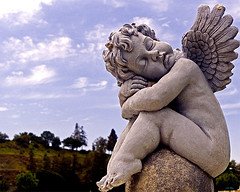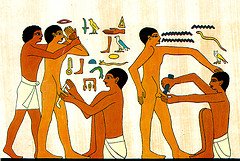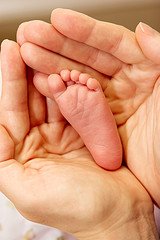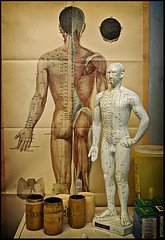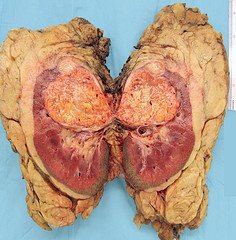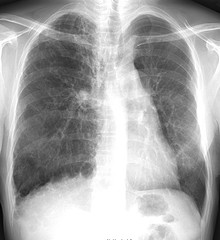Avian influenza has spread and, while it has not reached pandemic proportions, constant vigilance is still crucial.
Avian flu is in the news so much nowadays that some of us may have become desensitised to the urgency of the matter.
When news about avian flu first broke in 1997, there was much concern when it revealed that the virus, having transmitted from chickens to humans, had infected 18 people and killed six. Then, things quieted down for a few years, until 2003 when avian flu made an appearance again and never went away.
A health worker injecting a chicken with the bird flu vaccine in a poultry farm in China. The H5N1 (virus) may never become pandemic but, if it does, the catastrophic situation could be more than we can even imagine.
According to Prof Malik Peiris, the avian flu problem has been progressively increasing. Peiris is the virologist who discovered the aetiological agent that causes Severe Acute Respiratory Syndrome (SARS), and has been involved with avian flu research. He is based in Hong Kong, but was in Kuala Lumpur recently to receive the Mahathir Science Award 2007, Malaysia’s most prestigious science award named in honour of former prime minister Tun Dr Mahathir Mohamad.
During the SARS outbreak, Peiris led a team of researchers from the University of Hong Kong and Queen Mary’s Hospital who managed to identify the SARS coronavirus within weeks. That breakthrough, along with other measures, led to the successful control and containment of the outbreak.
After the avian flu outbreak in 1997, Peiris subsequently became more interested in avian and animal influenza viruses and their danger to humans.
“If you look at the geographical area that is affected, it is now bigger than it was two or three years ago,” said Peiris. “So if you look at that scale, at the poultry level, it is increasing. It is certainly not going to disappear. This is going to be entrenched, and we are not going to be able to get rid of it in the short term.”
Fortunately for us, the efficiency of the virus infecting humans is still very low. Most of the time, people who are exposed to the virus are not infected. But Peiris identifies two levels to the problem. First, the huge poultry industry would mean that people’s livelihood, the country’s economy and human health would be affected. Second, the occasional transmission of the virus from poultry to humans, where the real danger is, if the transmissions are not monitored and controlled, and the virus is allowed to adapt and transfer between humans.
“There are people who say, well, this virus has been here for 10 years, and it has not really done this, so it won’t happen,” said Peiris. “I think that is extremely dangerous. That was exactly the same situation with SARS. That virus was also probably in the animal reservoir for quite a long time.”
Prof Malik Peiris: ‘We really have to take it (bird flu) seriously, and take measures to see what can be done.’
But Peiris pointed out that this doesn’t mean we should start panicking, nor should we be complacent about it.
“On a risk-assessment basis, the H5N1 (virus) may never become pandemic,” said Peiris. “But the point is, if it does, the catastrophic situation could be more than we can even imagine. It definitely could be much worse than any of the past pandemics. We really have to take it seriously, and take measures to see what can be done.”
Mutation
While there are claims that the virus is two mutations away from human-to-human transmission, and that it has learnt to infect humans more easily, Peiris dismissed these as “simplistic”.
“It obviously requires a lot of adaptations, not just one or two,” Peiris explained. “A number of studies have shown that mixing the genes alone doesn’t do it. It requires a multi-step process. That’s probably why it hasn’t happened so far. But I think these rare events do happen, and we’d be very stupid not to take precautions.”
Peiris warned that the problem is currently “grossly underestimated”. In countries where the virus is endemic, he said, much more poultry carry the virus than people imagine. Poultry enter the markets and are slaughtered, so it doesn’t seem as though they are dying from the virus. But the virus continues to circulate as farmers bring their cages to the markets, leave the poultry there, and return to their farms with the cages, unaware that those cages may have come into contact with the virus.
“Once the virus gets in a market, it remains there almost forever,” said Peiris.
He said countries such as Malaysia, Japan, North Korea and India have been successful in detecting the virus early and eradicating it, demonstrating the need to be alert at all times.
Even during the lull between 1997 and 2003, virologists and researchers continued their surveillance and published papers on their findings, all the while aware that the virus was still lurking somewhere and was adapting.
Defence
While the capacity for producing vaccines has increased, Peiris said the real challenge is in creating a vaccine that would protect against more than one strain of the H5 virus which is now diverse. The fact that we do not know which strain will become pandemic means there needs to be broad protection. Peiris said the newer vaccines that have come to clinical trials look promising, but there is also the problem of trying to produce enough in an emergency.
This raises some tricky issues. We could wait for a pandemic before producing the vaccine, but chances are there would not be enough time because it takes months to scale up production. The second option, said Peiris, is to stockpile the vaccine in advance, but money could be wasted if a pandemic never happens.
This would mean that an ideal situation where one could walk into a store and purchase the vaccine in an emergency would never be viable.
“You can’t have a vaccine that is not regularly used sitting in the stores,” said Peiris. “For the next five years, it might not be used, and it will be out of date. I think the real possibility is to stockpile it in bulk at governmental level. So if the emergency comes, it can be quickly distributed.”
Asked if there is a beacon of light in this seemingly hopeless situation, Peiris pointed to how SARS was successfully controlled, and that it was a great achievement of global collaboration.
“I think the control of SARS was probably one of the greatest triumphs for global public health,” he said. “So things can be done, for sure. But we can’t sit back and assume that things will happen. It is actually planning, intervention, collaboration and all these things that made it happen.”
Labels: flu
